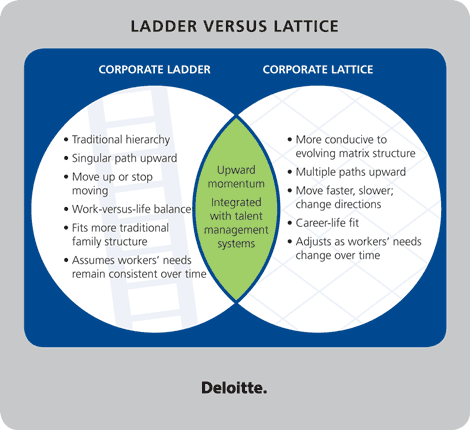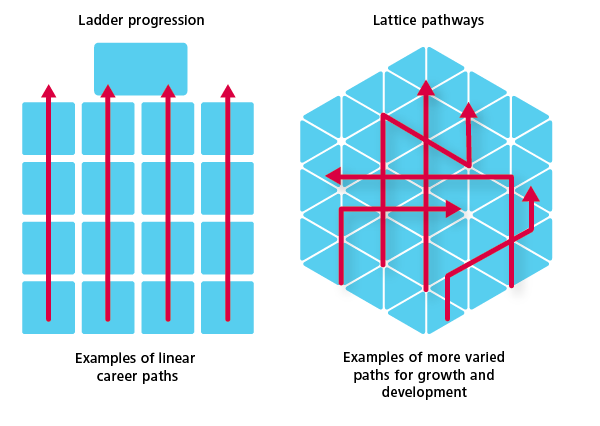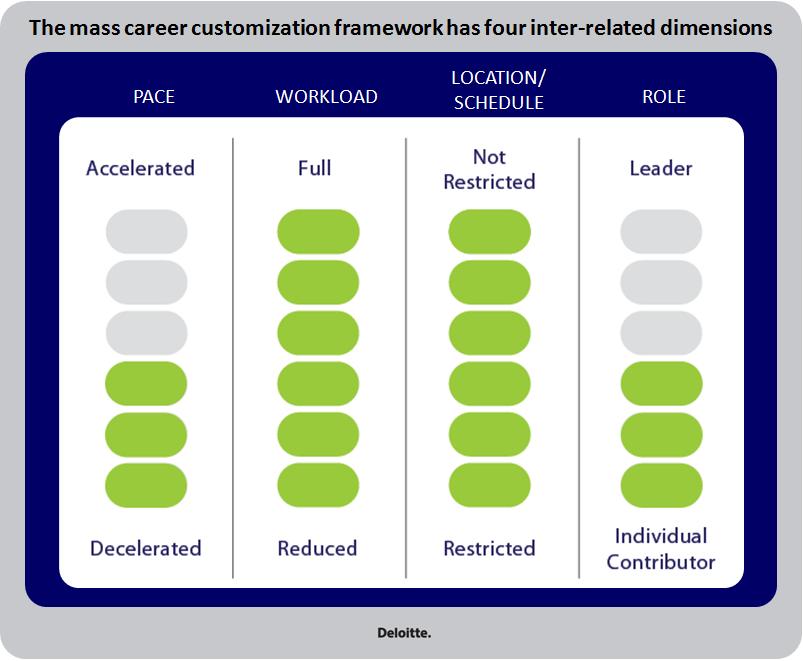
MC Escher’s “Relativity” (source of image)
Does success always mean moving up the corporate ladder? What if you can consciously choose to go sideways instead?
Traditionally, organisational progress meant getting promoted and scaling up the rungs of management. However, things are certainly changing in this day and age.
While listening to my favourite podcasts from Harvard Business Review, I came across the idea of the Corporate Lattice, which was also the title of a book by Cathy Benko and Molly Anderson of Deloitte.
It was a fascinating concept in organisational management which debunked the still widely followed traditional hierarchical organisation, while providing some semblance of order for leaders and HR managers alike.
Corporate Ladders to Lattices
According to Deloitte…
“Today a career is no longer a straight climb up the corporate ladder, but rather an undulating journey of climbs and lateral moves. The proverbial corporate ladder is evolving, right before our eyes, into a corporate lattice.”
Diagrammatically speaking, the differences between a traditional ladder-like hierarchical organisation and a lattice organisation can be illustrated by this chart from Deloitte:

Courtesy of Deloitte
The Lattice Organisation isn’t a brand new concept. In fact, Bill Gore, the original founder of this concept in 1958 (its that old), shared this quote (source):
“The simplicity and order of an authoritarian organization make it an almost irresistible temptation. Yet it is counter to the principles of individual freedom and smothers the creative growth of man. Freedom requires orderly restraint. The restraints imposed by the need for cooperation are minimized with a lattice organization.” – Bill Gore
So what are the principles of a Lattice Organisation? Adapting from Deloitte, here are the core principles:
#1 Multi-directional career paths
A lattice organisation has multidirectional paths for employees – up and down (career-life fit may dictate a slowing down in latter years), lateral, as well as diagonal. There are many ways to progress beyond the traditional vertical ladder.

Courtesy of Deloitte
#2 Dynamic Project Teams
A lattice model looks at work which is more dynamic, ephemeral, and project-based. Teams are assembled on a grid, with the possibility of connecting with each other in a spontaneous manner.
#3 Multi-directional Sponsors and Leaders
A lattice organisation has multi-directional support, relationships and interactions.
In Gore’s model, this can be divided into “sponsors” and “leaders”:
- Sponsors engage in a one-on-one relationship with the associate and mentors him or her like a coach, focusing on the person’s unique development
- Leaders focus on business objectives, take leadership of teams, develops strategy and solve problems
#4 Integration of Work and Life
Naturally, work changes significantly for the individual. With the deeper integration of work and life, coupled with the fact that work is no longer a place but a function, there will be a greater multiplicity of roles in such an organisation.
There are four dimensions according to Deloitte:
- Pace: Options related to the rate of career progression, ie accelerated or decelerated.
- Workload: Choices related to the quantity of work output, ie full or reduced.
- Location/Schedule: Options for when and where the work is performed, ie not restricted to restricted.
- Role: Choices in position and responsibility, ie leader to individual contributor.

Courtesy of Deloitte
These variables may change depending on your primary role, life stage, geographic and mobility considerations, and preferred contribution pattern (eg being a professional specialists versus a manager).
Reflections On The Lattice
Personally, I see lots of similarities between this structure and what we intended to implement in my organisation.
Calling our approach that of a hybrid-matrix organisation, we hope to find ways to make work not only more flexible, but modular with various modes of development for team members. Project groups, including spontaneously occurring innovation task forces, could also be in the cards.
Of course, managing such a structure isn’t going to be easy.
For example, staff appraisals may need to increasingly take a more multi-dimensional approach, with peers and other managers coming in. However, it may be the only way organisations can move forward into the future.
What are your thoughts on the Lattice Organisation? Would this work in your organisation? I’d love to read your thoughts.

Thank you for sharing the information here. And if you are looking for the best relocating and logistics support can benefit through our Frigate Logistics and Movers Pte Ltd. For detailed information you may choose from our